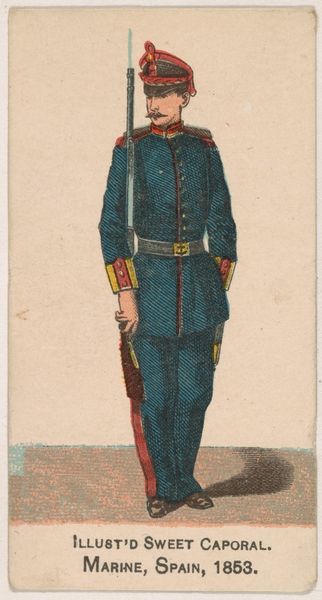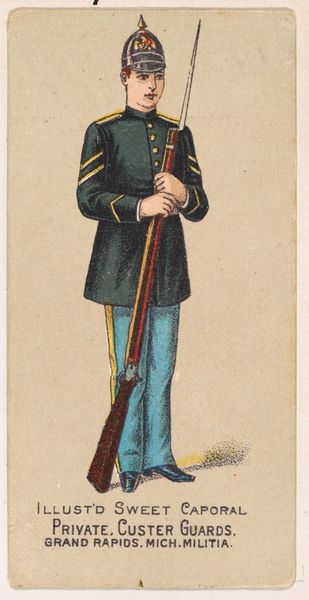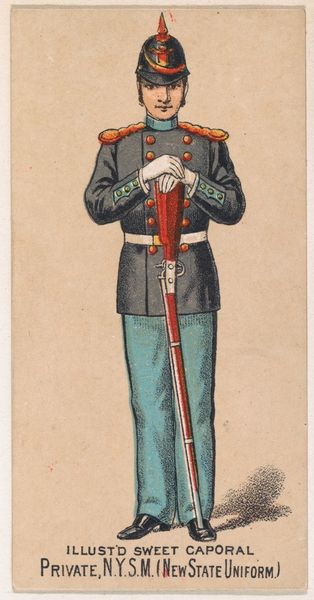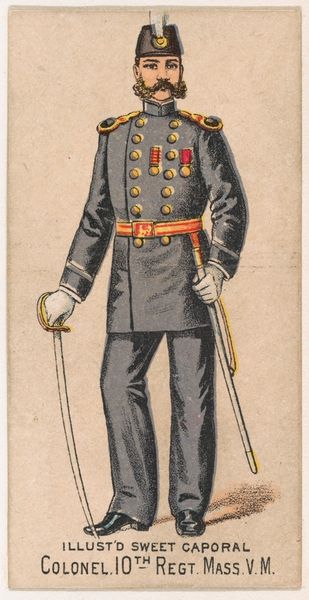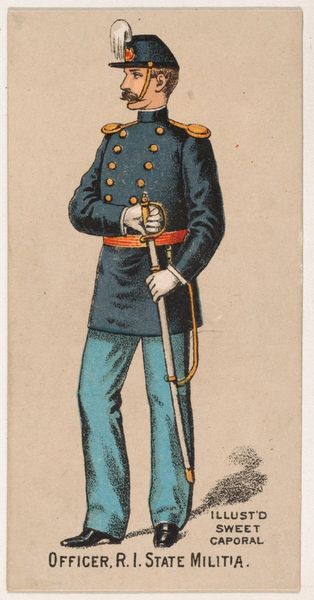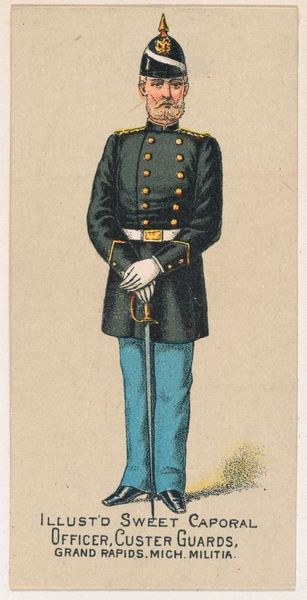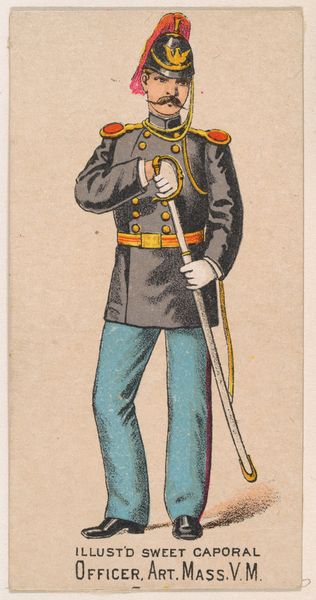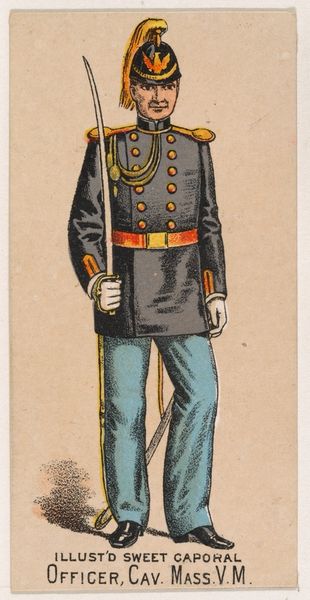
Private, 11th Regiment, New York State Militia, from the Military Series (N224) issued by Kinney Tobacco Company to promote Sweet Caporal Cigarettes 1888
0:00
0:00
drawing, print
#
portrait
#
drawing
# print
#
caricature
#
caricature
#
soldier
#
men
#
history-painting
Dimensions: Sheet: 2 3/4 × 1 1/2 in. (7 × 3.8 cm)
Copyright: Public Domain
Curator: This printed image, "Private, 11th Regiment, New York State Militia," comes from a series produced around 1888 by Kinney Tobacco Company as promotional material for their "Sweet Caporal" cigarettes. Editor: My initial reaction is one of curiosity, a somber presentation of militaristic rigidity mixed with caricature. He appears quite self-serious in his posture. Curator: These kinds of promotional items often romanticized aspects of public life. Consider the historical context: in post-Reconstruction America, anxieties surrounding national identity were being actively negotiated. So how does this image reflect or refract such tension? Editor: Visually, I’m struck by the stark verticality. The rigid posture of the figure, his centeredness in the frame. Even the rifle reinforces this. And then the uniform’s trim, with its stark reds and golds. I wonder what a cultural historian might make of these militaristic symbols within what is essentially tobacco advertisement? Curator: Precisely! The uniform signifies not only state power, but also ideals about civic duty during the late 19th century. By linking images of militia members with a consumer product, the tobacco company cleverly intertwined personal enjoyment with symbols of national pride. It speaks volumes about the political landscape of the time. Who was being encouraged to participate in this fantasy? Editor: I’m also drawn to the way he holds the rifle, not aggressively, but almost protectively. It suggests the idealized, rather than the actual. It recalls other soldier icons. Perhaps he embodies anxieties surrounding both masculine identity, national service, and duty to his regiment. All packaged into a simple cigarette card! Curator: These trading cards helped manufacture a palatable, and importantly, consumable, history. We’re prompted to reconsider how businesses have historically deployed symbols of national unity for marketing gains. It reminds us of how ideologies filter into even the most commonplace items. Editor: Indeed, I hadn't expected to see so much communicated by a simple illustration on a small paper medium meant to promote cigarettes! It really underlines the pervasiveness of symbols and their emotional power, no matter how small or overlooked their application might be. Curator: Understanding those connections truly illuminates how cultural narratives were constructed and circulated in 19th century America.
Comments
No comments
Be the first to comment and join the conversation on the ultimate creative platform.

